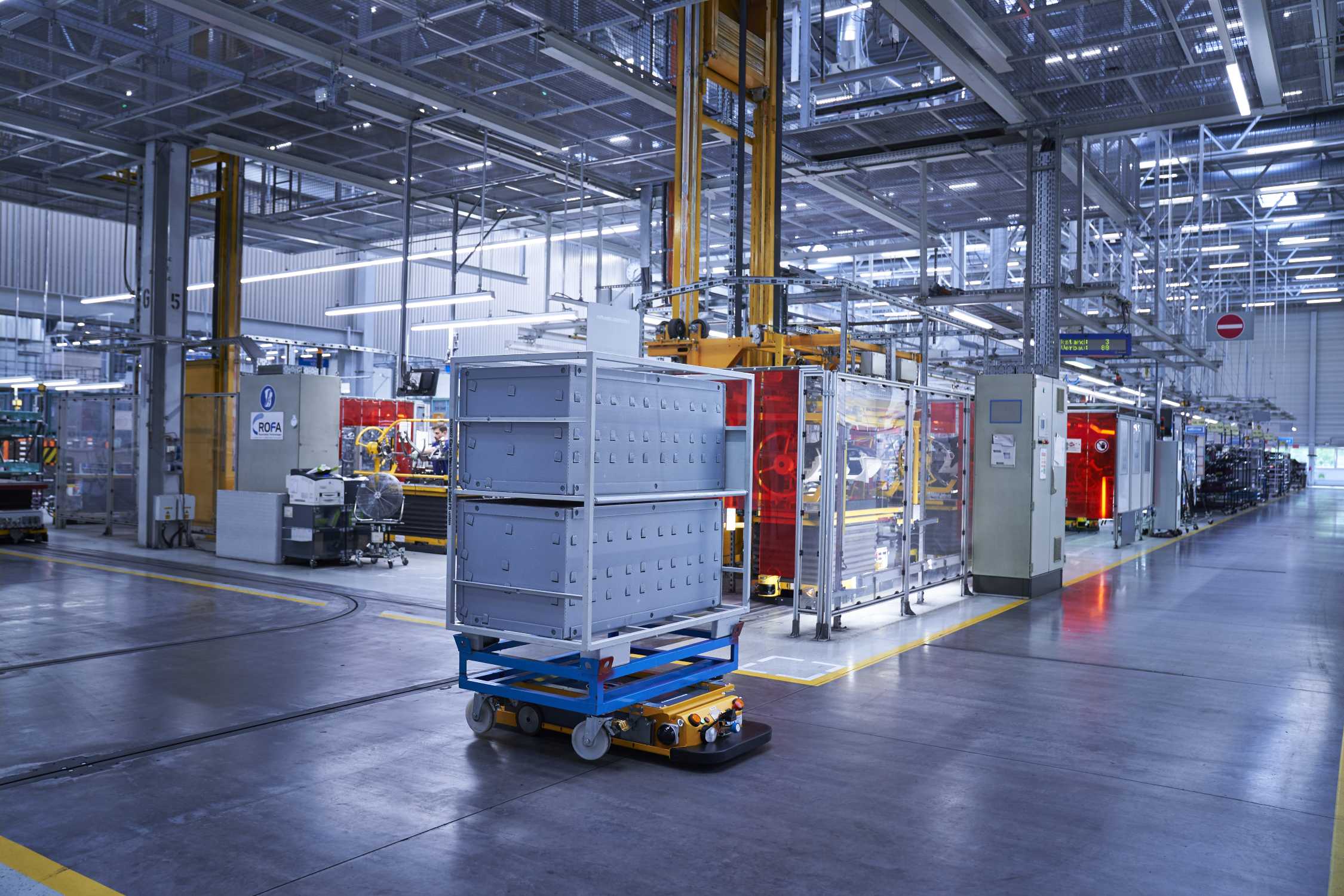PressClub Middle East · Article.
BMW Group is making logistics robots faster and smarter
Wed May 13 06:00:00 CEST 2020 Press Release
Latest graphics and computing technologies for robotics applications in production logistics • Advanced coordination capability of autonomous logistics robots • Use of high-performance computers to stabilize processes • Collaboration with California-based tech company NVIDIA
Press Contact.
Osama El-Sherif
BMW Group
Tel: +971-4-3129-964
send an e-mail
Author.
Osama El-Sherif
BMW Group
Munich. In future, the BMW Group will be increasing its use of high-performance computer technology, particularly artificial intelligence (AI), in logistics. Top priorities include intelligent logistics robots, data analytics and the high-definition simulation of logistics processes. These AI applications can optimize robotics and material flow, as well as take simulations in the planning process to a new level.
In a first pilot project, the BMW Group has equipped logistics robots and smart transport robots (STR) developed in-house with high-performance technology and special AI modules.
This improves the robots coordination as well as their ability to recognize people and objects compared to the technology used previously. The enhancements to the navigation system allow robots to identify obstacles such as forklifts, tugger trains and people faster and more clearly, which makes it possible to calculate alternative routes in a matter of milliseconds. This AI-based technology enables the robotics applications to learn and apply different responses to people and objects.
“The use of high-end AI and visualization technologies to redesign our logistics is revolutionary. Our collaboration with NVIDIA is allowing us to develop state-of-the-art Industry 4.0 technologies,” comments Jürgen Maidl, Head of Logistics in the BMW Group’s Production Network. “With this high-end technology, we can further optimize our logistics innovations and processes. Combining our innovations with NVIDIA’s high-performance technology is a huge step forward.”
Faster and more precise thanks to high-performance computers
The BMW Group is currently working on developing five AI-enabled logistics robots to improve logistics processes. This involves the previously announced Smart Transport Robots (STR) for autonomous transportation of materials, as well as logistics robots to select, grab and handle components and load carriers. Developed based on NVIDIA’s ISAAC robotics software platform, the robots utilize a number of powerful deep neural networks (DNNs), including perception, segmentation, pose estimation and human pose estimation. In addition to real data, the robots are trained to render ray-traced machine parts in a variety of lighting and occlusion conditions. The real and synthetic data are then used to train deep neural networks on DGX servers. The robots are virtually trained and tested on the ISAAC robotics software platform, operating in Omniverse virtual environment where multiple BMW Group personnel in different geographic locations can all work in one simulated environment.
Optimized virtual logistics planning
The BMW Group already uses high-performance computer technology in conjunction with artificial intelligence in its virtual logistics planning. AI 3D scans can recognize different objects – such as containers, building structures or machines – and use this information to create a virtual layout plan through high-resolution 3D scans of entire buildings and factories. The technology allows the engineers to remove individual objects from the 3D scan using 3D planning software and then change them one at a time. This makes it easier to simulate and comprehend layout changes within the production halls.

The BMW Group production network
In 2019, strong customer demand and new models kept capacity utilization high across the BMW Group production network. Production volumes for the BMW, MINI and Rolls-Royce brands reached record levels, with output totalling 2,564,025 units. Of those, 2,205,841 were BMW vehicles, 325,729 MINI, and 5,455 Rolls-Royce Motor Cars. Approximately one million vehicles were manufactured by the German plants.
Uniquely flexible and highly efficient, the BMW Group production network is able to respond quickly to changing markets and regional sales fluctuations. Expertise in manufacturing is a key contributor to the BMW Group’s profitability.
The BMW Group production network uses a range of innovative digital and Industry 4.0 (IoT) technologies, including virtual reality, artificial intelligence and 3D printing applications. Standardized processes and structures across the production system ensure consistent premium quality and allow a high degree of customization.
Artificial Intelligence
The use of Artificial Intelligence (AI) as a key technology is an embedded element in the process of digital transformation at the BMW Group. The company already employs AI throughout the value chain, enabling it to generate added value for customers, products, employees and processes. “Project AI” is the BMW Group’s centre of excellence for data analytics and machine learning. It ensures rapid connectivity plus knowledge and technology sharing throughout the company. “Project AI” therefore has a key role to play in the BMW Group’s ongoing digital transformation and underpins the efficient development and scaling of new technologies. The BMW Group’s D³ portfolio provides transparency on the use of technologies making Data-Driven Decisions (hence the name D³). It comprises over 400 use cases at present, more than 50 of which have already been made available for regular operation.